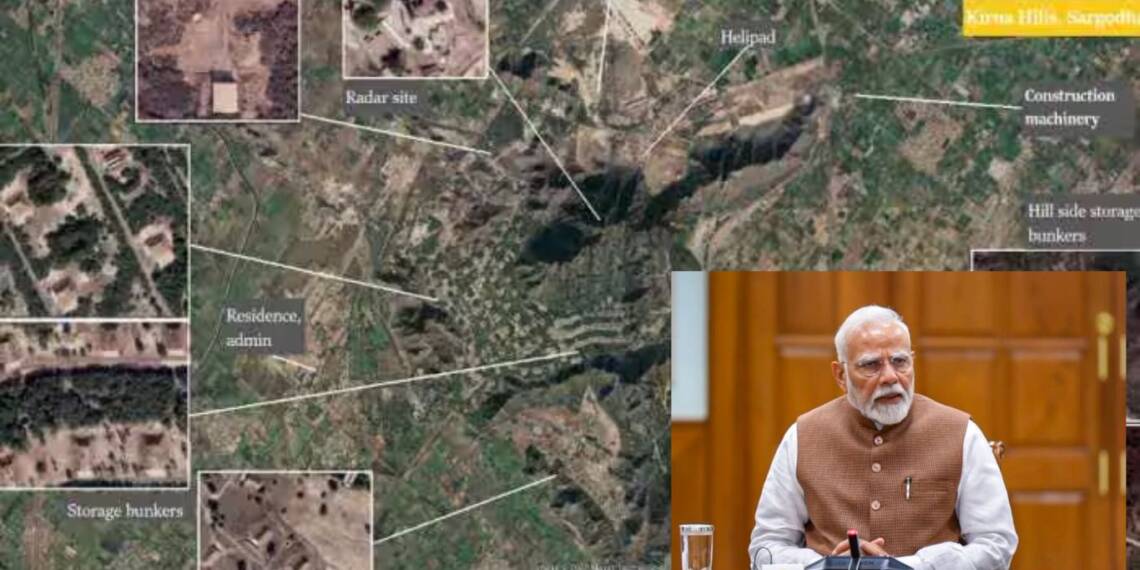The recent India-Pakistan clash has once again shown the fragility of Pakistan’s military capabilities. After the shocking Phalgam attacks on innocent Hindu tourists, killing 26 civilians. India has rightly been incensed by Pakistan harbouring yet another terror network in its midst. The attack was claimed by The Resistance Front, an offshoot of the dreaded Pakistani and international terror organization Lashkar e Taiba.
India has long told Pakistan to get rid of the huge network of terrorists on its territory. From the Al Qaeda to the Haqqani network, from the Lashkar-E-Taiba (LeT) to Jaish-e-Mohommad (JeM) Pakistan is home to an array of international terrorist entities. As of early 2025, approximately 150 individuals and entities associated with terrorism and linked to Pakistan have been designated by the United Nations Security Council’s 1267 Sanctions Committee. Pakistan has earlier harboured even the 9/11 mastermind Osama Bin Laden.
What is most worrisome for the world is that Pakistan is a nuclear country and has nuclear weapons, while so many radical Islamists are freely operating on its territory. Now there are reports that Pakistan had some issues with managing its nuclear facilities after India targeted precise locations in the country.
India’s precision air strikes on critical Pakistani airbase on May 10 not only delivered a crushing blow to Pakistan’s aerial capabilities but also signalled a decisive turn in the four-day escalation between the two nuclear-armed neighbours. As Indian missiles obliterated vital runways and struck uncomfortably close to its nuclear arsenal, leaving Pakistan shaken. Within hours of the coordinated strikes, an alarmed US was forced to intervene and a cornered Pakistan made urgent overtures for a halt to all military actions. It was advantage India.
In a pre-dawn operation on May 10, the Indian Air Force (IAF) struck 11 military sites deep inside Pakistan using air-launched precision weapons. The targets included critical airbases in Rafiqui, Murid, Nur Khan, Rahim Yar Khan, Sukkur, Chunian, Pasrur, and Sialkot, the Ministry of Defence said.
Satellite imagery later confirmed the extensive damage, showing destroyed hangars and blown-up air strips. A strike on Rahim Yar Khan airbase left a massive crater on the runway. The strike on Nur Khan airbase in Chaklala, near Rawalpindi, carried significant strategic weight. The base is home to Pakistan’s main transport squadrons and vital for logistical and strategic airlift operations, housing aircraft like C-130 Hercules and IL-78 mid-air refuelers.
More critically, Nur Khan lies in close proximity to the headquarters of the Strategic Plans Division, the body overseeing Pakistan’s nuclear arsenal. The New York Times quoted a former US official familiar with Pakistan’s nuclear programme, noting, “Pakistan’s deepest fear is of its nuclear command authority being decapitated. The missile strike on Nur Khan could have been interpreted as a warning that India could do just that.”
Satellite imagery also indicated a strike on the runway of Mushaf airbase in Sargodha. This base is reportedly linked to underground nuclear storage sites beneath the Kirana Hills and was struck with multiple loitering penetrating munitions. These strikes on Nur Khan and Sargodha were a direct signal to Pakistan about India’s capability to neutralise its nuclear arsenal if the conflict escalated further.
Pakistan in shock as US intervenes
According to the sources, the Indian strikes triggered panic in Islamabad. That same day, Pakistan Prime Minister Shehbaz Sharif convened an emergency meeting of the National Command Authority, the apex body responsible for operational decisions regarding the country’s nukes. While Pakistan later denied the meeting, the reports highlighted the impact of India’s assertive action.
In Washington DC, Trump administration officials worried about the conflict spiraling out of control. The New York Times reported that US Vice President JD Vance, who had previously stated the conflict was “none of our business,” called Prime Minister Narendra Modi, urging de-escalation and direct engagement with Pakistan.
The damaging air strikes on key airbases effectively cornered Pakistan, leaving it with little option but to stand down and appeal for a pause in the fighting. This gave India the strategic upper-hand and paved the way for a fragile truce on its own terms, albeit with a nudge from the US.
Operation Sindoor represents a marked shift in India’s strategic approach towards Pakistan. By striking deep into Pakistan’s heartland, targeting strategically important areas in Pakistan, it has altered the terms of engagement. In a further caution to Pakistan, India has now also adopted a new doctrine regarding cross-border terrorism: any future act of terror will be considered an act of war, India has already put the Indus Waters Treaty in abeyance and it looks like Prime Minister Narendra Modi is in no mood to accept Pakistan’s terror networks on India’s border any longer. The clash has currently been put on hold, but a flare up again seems only a matter of time.








